Japan is one of the most visited countries in the world. Everyone flocks to the country to see its traditionally Japanese buildings, its futuristic ones, and the gorgeous countryside that has become famous over the years. One of the most iconic natural landmarks in Japan is Mount Fuji. Pictures of Mount Fuji have filled the internet and people have even described the mountain as a symmetrical beauty. Climbers trek to hike the mountain and it even has a history unmatched by others.
But there’s so much more to Mount Fuji than just a picture-perfect selfie and climbing trails. Let’s take a look at the 10 mind-blowing facts about Mount Fuji. We’ll go more in-depth on these facts and provide you with exciting information about this perfectly symmetrical mountain.
1. Tallest Volcano in Japan
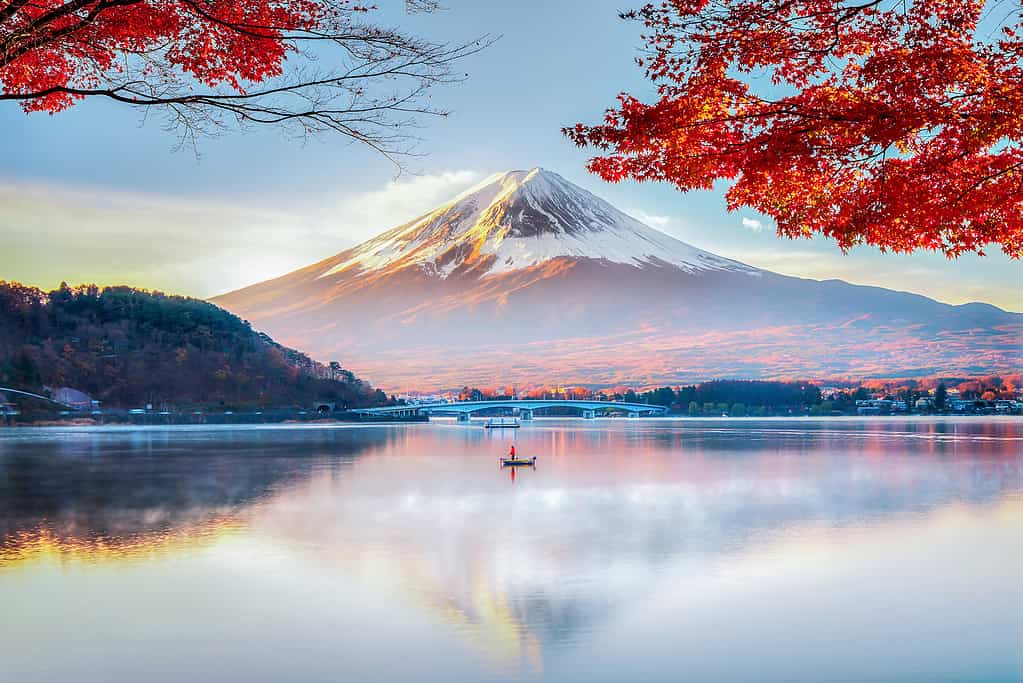
Mount Fuji is the second-highest volcano located on an Asian island. The first is Mount Kerinci in Sumatra, Indonesia.
©DoctorEgg/iStock via Getty Images
Mount Fuji is the tallest mountain in Japan. Furthermore, it’s the second-highest peak located on an Asian island in the entire world. It has an elevation of 12,389.3 feet, which is the 35th highest in the world. The mountain is also an active stratovolcano. Located on the island of Honshu and about 62 miles southwest of Tokyo, the last time the mountain erupted was over 300 years ago, in 1707 and 1708. The Japanese refer to Mount Fuji as “Fuji-san.”
2. Three Volcanoes in One

The new Mount Fuji began forming between 8,000 to 11,000 years ago.
©Fyletto/iStock via Getty Images
When you look at Mount Fuji, you may think it’s one volcano, but in actuality, it is three volcanoes in one. Mount Fuji was created by a series of earthquakes thousands of years ago. Geologists have also stated that the volcano was formed from three distinct tectonic plates, too. Moreover, Mount Fuji was formed from three peaks. There is Komitake on the northern part of the mountain and Ashitake, which used to be southeast of Mount Fuji. On top of these two peaks is what is called “Old Fuji” and then on top of that is what scientists call “New Fuji.”
3. Extremely Biodiverse
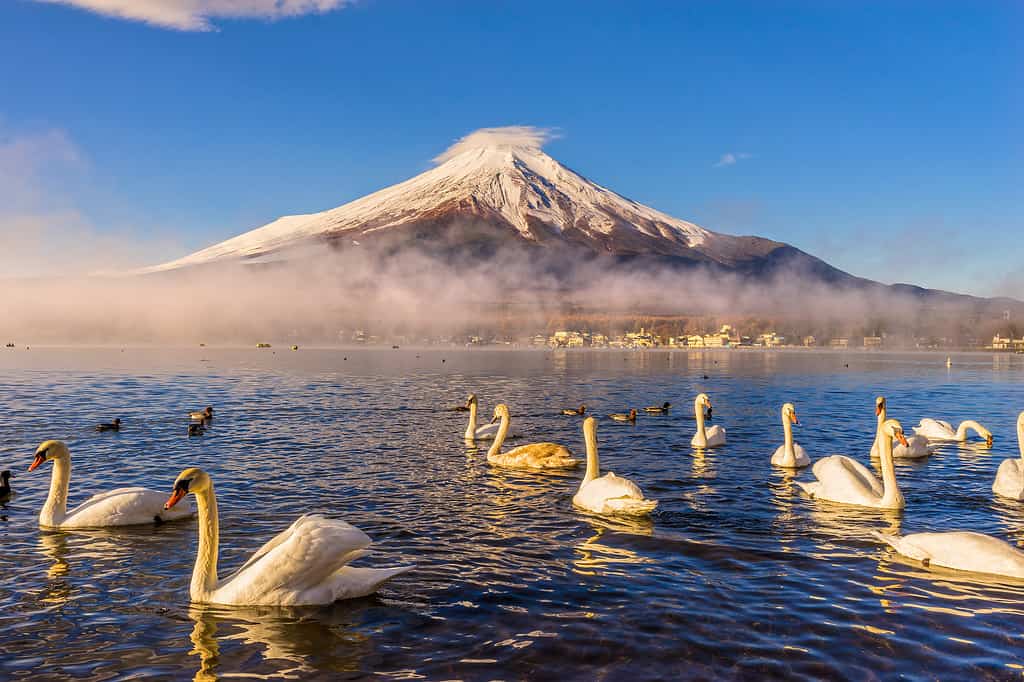
Mount Fuji is home to endemic species like the Japanese clawed
salamander
.
©Luciano Mortula/iStock via Getty Images
Mount Fuji is quite biodiverse. There are over 30 species of mammals that live on Mount Fuji including black bears, foxes, squirrels, and the Japanese serow, which is a Japanese goat-antelope. It also houses wild boars and if you look up at the sky, you may spot Eurasian jays. The mountain is also home to many species of plants. While on your Mount Fuji hike, you may find knotweed, fujihatazao, and even Fuji thistle. These plants have adapted to life from the volcanic ash and flourished quite beautifully.
4. Aokigahara Forest
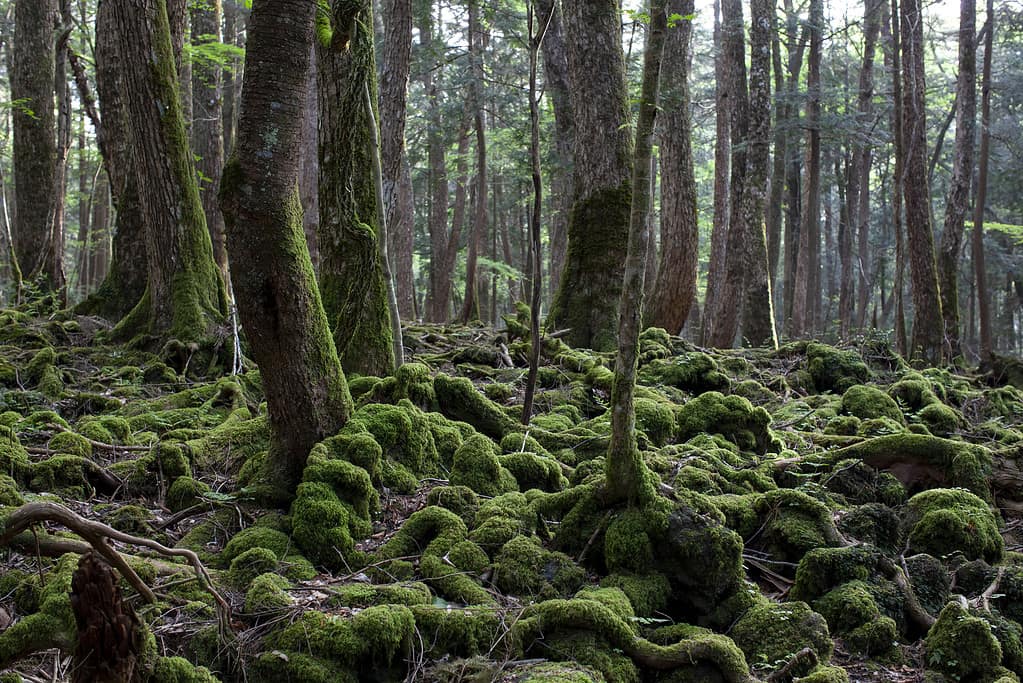
Aokigahara Forest is also known as “Suicide Forest.”
©TOSHIHARU ARAKAWA/iStock via Getty Images
Located northwest of Mount Fuji, Aokigahara Forest is one of the most infamous forests in the world. The site has been known to be rampant with suicides each year. For example, in 2003 alone, police found the bodies of 105 people who had killed themselves. Apart from suicides, the forest was also used as a dumping ground for elderly people who were neglected by their younger family members. People believe that ghosts of those left to die there haunt the forest. The government regularly posts signs to encourage people to call a suicide hotline and discourage people from committing the act.
5. Fascinating History

The mountain has had a colorful history for centuries.
©Cumulus_Than/iStock via Getty Images
The mountain has had a storied history over the centuries. Because it was sacred, women were forbidden from climbing the mountain until 1872. Even though the change happened in 1872, Tatsu Takayama was the first woman to climb up to the summit in 1832. Samurais used the base of Mount Fuji to train, and there were also archery contests held around there, too. In September 1860, Sir Rutherford Alcock became the first non-Japanese person to climb the mountain. He did so in 8 hours (he climbed down in 3 hours).
6. Myths and Legends
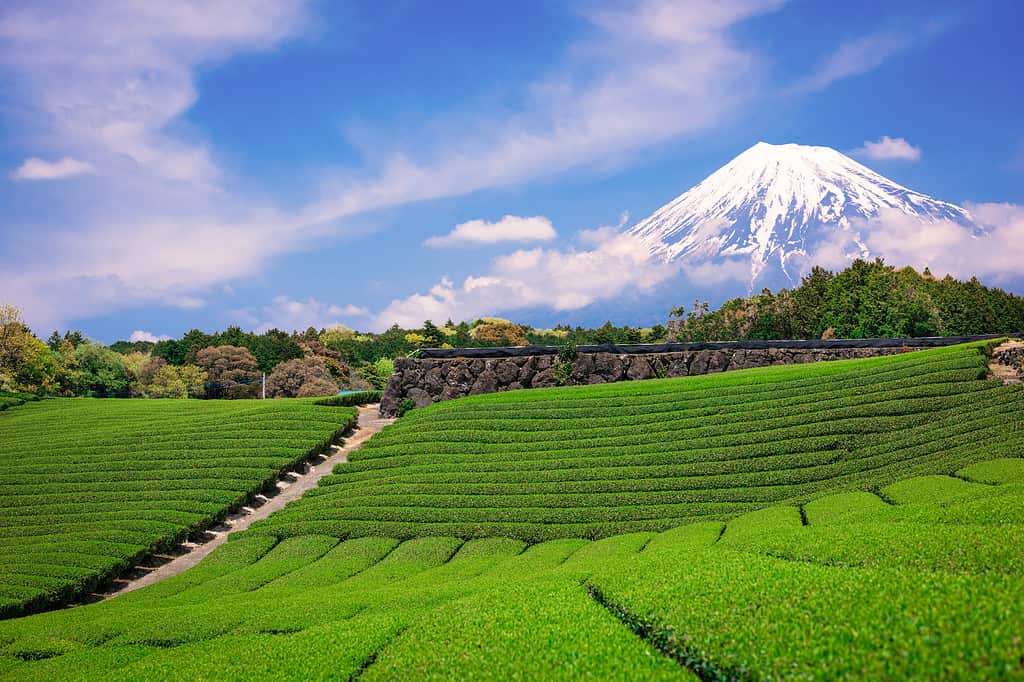
Mount Fuji has been the subject of many myths and legends over the centuries.
©Sean Pavone/iStock via Getty Images
Many myths and legends have been attributed to the mountain. One of them is how Mount Fuji came to be. Legend has it that Visu, who was a struggling farmer living in the barren land of Suruga, was so frustrated that he couldn’t produce anything of value on the land. One night, Visu heard a loud noise and he feared that it could have been an earthquake. Instead, Mount Fuji erupted. The lava made the land fertile and Visu was able to grow anything on the land. Since then, Visu called the mountain Fuji-yama, meaning “eternal mountain” in Japanese.
7. Religious Significance

Mount Fuji is so significant religiously that the summit and everything from the 8th station up belong to the Fujisan Hongu Sengen Taisha, which is a Shinto shrine.
©iStock.com/Goryu
The mountain has been of religious significance for a long, long time. In Buddhism, the Hokkeko believers of a sect called Nichiren Shoshu believe that doing a daylight morning ritual called Ushitora Gongyo, will ensure that Mount Fuji does not erupt because a mandala grants a certain supernatural protection from Buddhist deities. Also, during the Edo period, there was a religion called Fujiko that believed the mountain was a female deity and mandated its followers to climb Mount Fuji every year as a spiritual pilgrimage, where they would find happiness once the climb was complete.
8. Artists’ Muse

The stunning Japanese mountain has been featured in art, writing, theater, film, manga, and music.
©Vladi333/iStock via Getty Images
Mount Fuji has been more than just an important mountain for the Japanese in terms of hiking and the economy, it has also been a cultural icon for its people. Artists, writers, and poets have created works of art depicting the beautiful stratovolcano. In fact, Japanese painter Katsushika Hokusai is known for painting Mount Fuji in all its glory, mainly in Thirty-six Views of Mount Fuji and 100 Views of Mount Fuji.
9. Climber’s Paradise
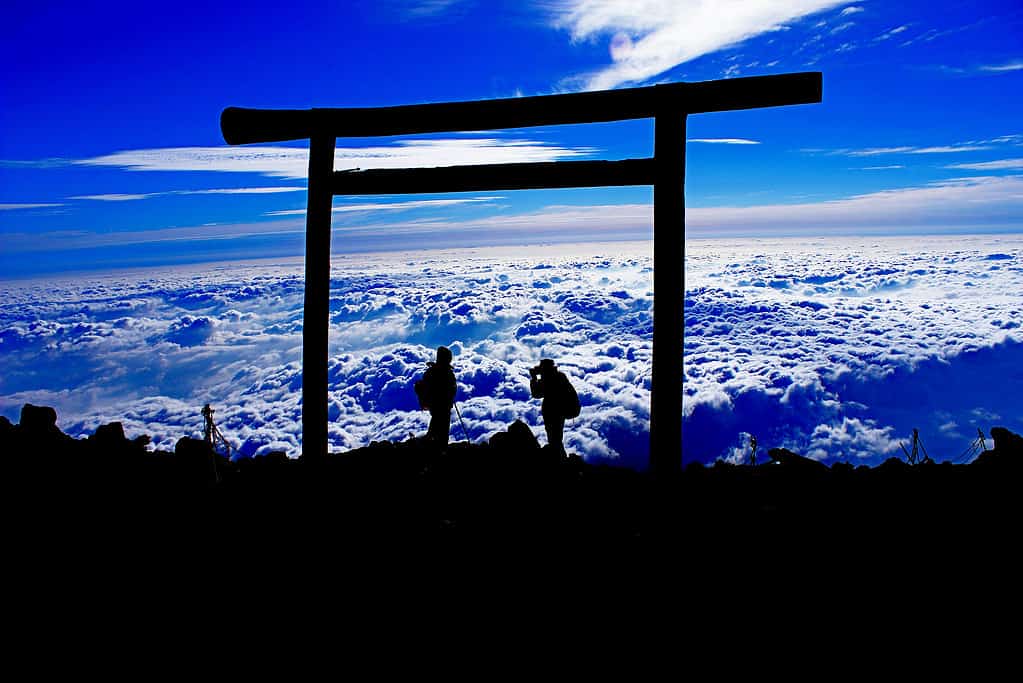
Most people climb the mountain at night so they can reach the summit by sunrise, producing a spectacular view for the climber.
©BankGiga/iStock via Getty Images
The mountain is a climber’s paradise. Over 300,000 people climb Mount Fuji every year, with the most popular months to climb being July and August. The weather is perfect during this time. From October to May, the weather gets colder and the government has discouraged climbers from hiking the mountain during these months. There are several trails to reach the summit, four of them are the most popular: Kawaguchiko, Subashiri, Gotemba, and Fujinomiya. The Gotemba trail is the hardest and a small number of people have ever climbed this trail.
10. Economic and Tourist Significance
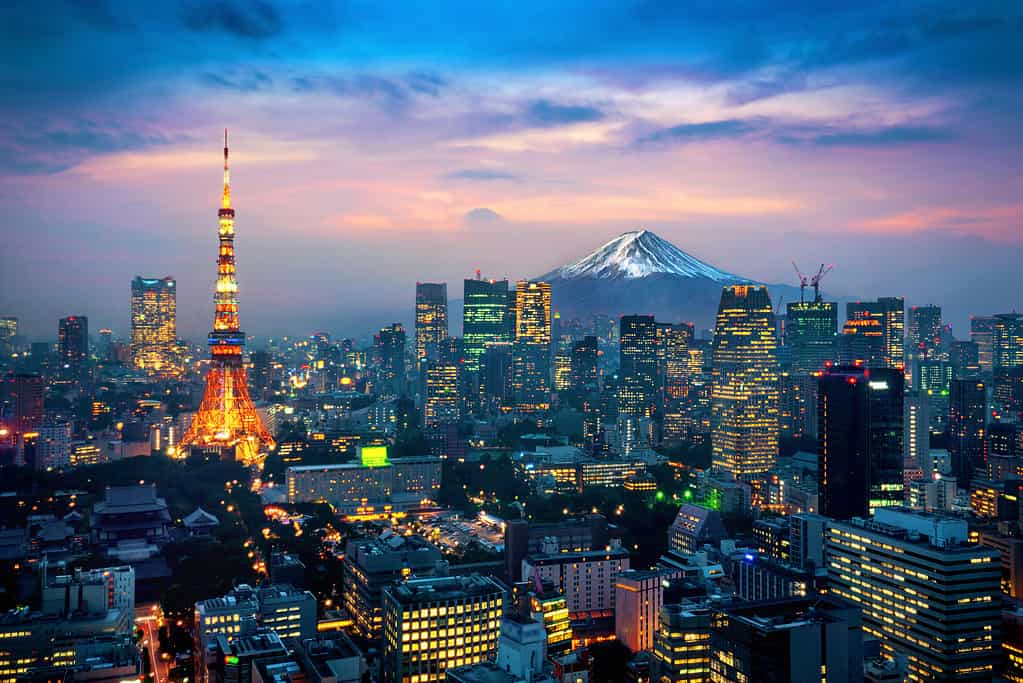
Mount Fuji has brought positive economic impacts to Japan.
©tawatchaiprakobkit/iStock via Getty Images
If it isn’t obvious already, Mount Fuji is a spectacular mountain that has been a cultural icon for hundreds of years. It is a national symbol to Japan and there are sacred grounds on the mountain, as well. Because of how important the mountain is, Mount Fuji has been a tourist haven for years. It has brought much cash flow to the country because of the many tourists that not only visit the country but also visit Mount Fuji. If the volcano ever erupted, there would be so much devastation in its surrounding areas, including a negative economic impact.
Conclusion
And there you have it, these are the 10 mind-blowing facts about Mount Fuji. The mountain is a national symbol in Japan. It has meant so much to Japanese people and society in general. The mountain has religious significance, but not only that, there is a sacred aura attached to the mountain. It provided people with a sense of belief when things had become unstable.
All in all, Mount Fuji is a significant natural beauty in all aspects — economic, sports, religious, biodiversity, geological, and historical. If you get the chance to go to Japan, Mount Fuji has to be on the list. You might be lucky and experience some sort of enlightenment while you visit the beautiful mountain.
Thank you for reading! Have some feedback for us? Contact the AZ Animals editorial team.








